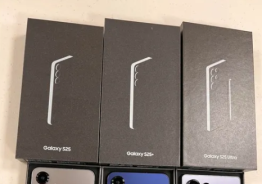Recently, Google Pay—a service offered by Google for secure payments via its digital wallet—users started expressing their distress on social media.
The problem? There was a new, unexplained card on their accounts without users doing anything about it. When the scary possibility of hacking and even data breaches entered the scenario, Google stated to clarify things.
Google Pay Users Scramble Over Mysterious New Cards
It is important for users to trust a digital wallet provider such as Google to have securely stored and managed their payment details. Between Octo. 3 and 4, however, users of the Google Pay service began receiving notifications saying that new payment cards had been added to their accounts, Bleeping Computer writes. Sure enough, this raised everybody's concerns about account compromise.
The weird thing? Old cards were what most users recognized as their own but had expired months, even years ago. Still, nobody could explain where these old cards came from. Users are now panicking, wondering if a hacker hacked their Google Pay accounts.
Self-security messaging by Google does little to assuage jangling nerves, either. It claims that "card details added to a Google Account are stored safely for a smoother checkout experience." So why are expired cards suddenly slipping out of the woodwork and seemingly ready for use?
No Account Hacking--Google Confirms It Was a Technical Glitch
When the panic began to spread across the platforms, X immediately intervened; it was Google's support. It assured users that there was no unauthorized access or security breach. According to its social media team, email notifications for new cards were sent "by mistake."
Still, these promises did little to calm several users, Forbes points out in its report. People often received multiple email notices: one for every card that had already expired.
A user said he received 15 emails from just such a notice. Another got three such notifications on three different expired cards. No wonder users panicked and thought their accounts had been hacked.
This finally escalated as discussion in Google Pay support forums flooded in, making it a trending issue for a few days. Worried users were asking for clarifications, Google finally responded more formally to the mystery over the weekend.
Read Also: T-Mobile Vows to Improve Cybersecurity, Pays Almost $16 Million Fine For Repeated Data Breaches
Google Official Response: A Glitch, Not a Breach
On Oct. 5, Google issued an official email accepting that the mistake was on its side. The company ensured users that account security had not been compromised and that the card additions were caused by a technical glitch resulting in the addition of expired cards.
The message's subject line raised a few eyebrows: "You do not need to take any action." While Google asserted that the issue was fixed, many users still don't shake off the feeling of unease.
Given the situation, it makes sense for users to take action, specifically by checking their Google Pay wallets and then removing any expired cards that may still be waiting in the queue.
How to Stay Safe: What Google Pay Users Should Do Now
Google may be saying there was no hacking, but that shouldn't be bad to be proactive and prepared about your personal information while using Google Pay. If you are a Google Pay user, here's what you must do after this incident:
Check your wallet on Google Pay: Clear expired or inactive cards to avoid confusion when they appear to charge again.
Monitor transactions: Check your recent history of suspicious activities and unauthorized transactions.
Security settings: Ensure that your account has two-factor authentication. Update your password periodically.
While this glitch, most importantly, didn't hurt your account, keeping your digital wallet updated is always a good idea. In this case, the technical error by Google becomes a great reminder to keep your financial information updated and secure your account.
© Copyright 2025 Mobile & Apps, All rights reserved. Do not reproduce without permission.













